My culture

My culture Oil painting by Themba Siwela, South African artist. – Achille Mbembe, in his classic text “On the Postcolony,” showed how public art forms have been important sites of critique and commentary that reveal the form and nature of power and its operations in postcolonial African societies. This kind of analysis of art is […]
Umuthi wenyongo
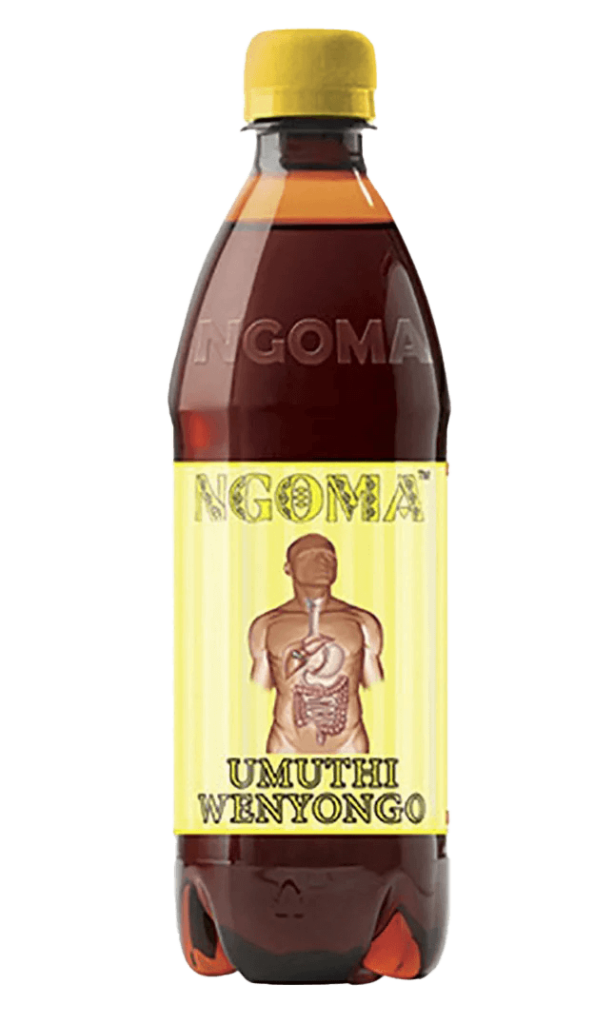
A B Umuthi wenyongo A bottle of healing medicine manufactured by a company trading as 3Sixty Herbal Health, with a product line called “Ngoma”. “Umuthi wenyongo” is an isiZulu term for “herbal medicine of bile”. – Umuthi wenyongo: these ideas about pollution and purging of the gut are very old in southern Africa, and yet […]
The Navel Cakra (maṇipūraka) with Intestines
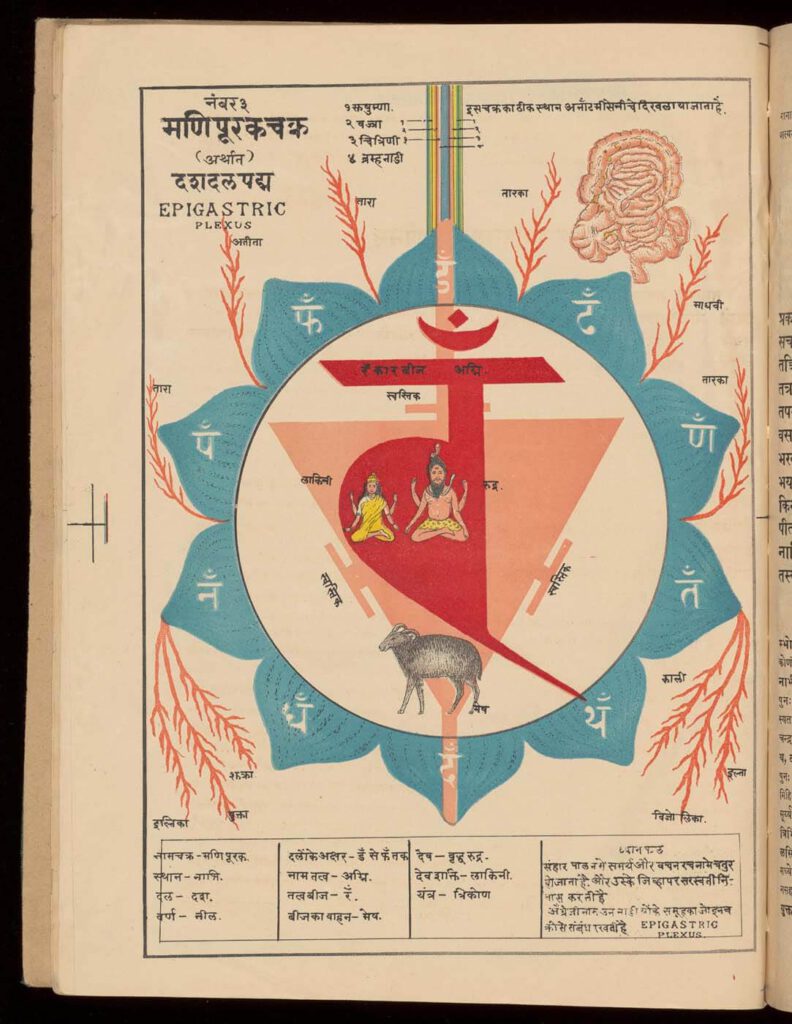
The Navel Cakra (maṇipūraka) with Intestines Provenance: Printed book, Bihar, undated [1903]. Anglicized Bibliographic data The Ṣaṭcakranirūpaṇacitra with the Bhāṣya and Bhāṣāṭīkā by Svāmihaṃsasvarūpa. Bihar: Trikutivilas Press Muzaffarpur. Sanskrit Title and Author in Devanagari font स्वामिहंसस्वरूपकृतम्षट्चक्रनिरूपणचित्रम् । भाष्यसमलंकृतं भाषाटीकोपेतञ्च Sanskrit Title and Author in Roman font Svāmihaṃsasvarūpakr̥tamṢaṭcakranirūpaṇacitram: bhāṣyasamalaṃkr̥taṃ bhāṣāṭīkopetañ ca Source: Wellcome Library, manuscript number, […]
Rāja Mandhata
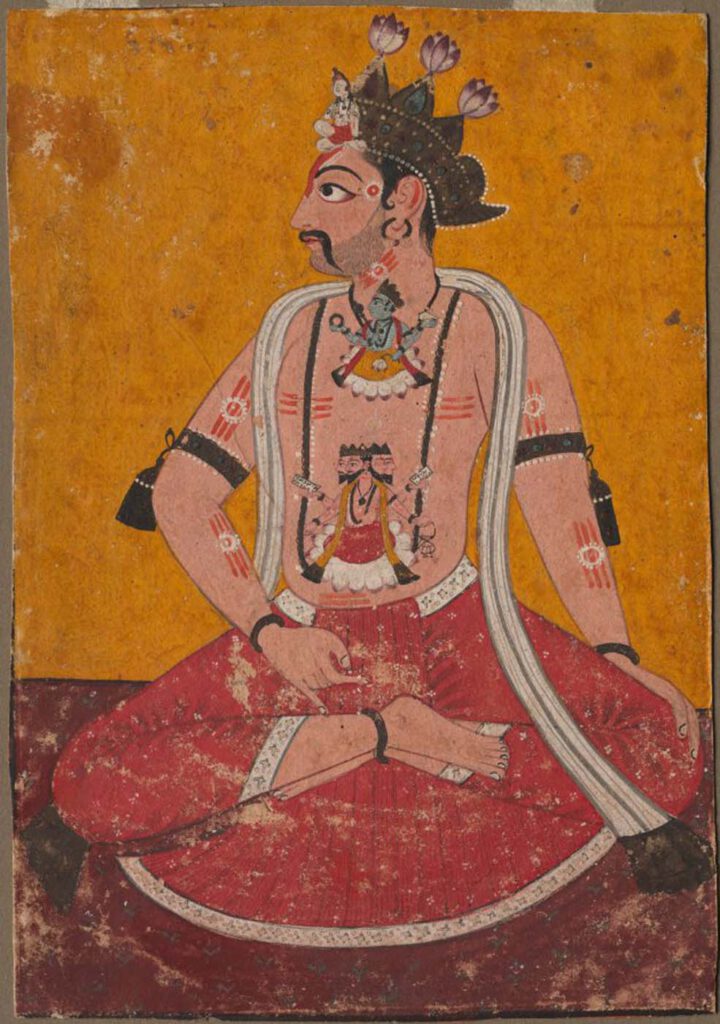
Rāja Mandhata Nurpur, Himachal Pradesh, India c. 1690–1700. Source: Cleveland Museum of Art CC0 1.0 Universal (CC0 1.0) – The yogic body was configured in different ways by various traditions. The abdomen was thought to be the seat of fire in the body, and it could be stimulated by the practice of physical yoga postures, […]
Food’s Course of Movement in the Intestines (engraving)
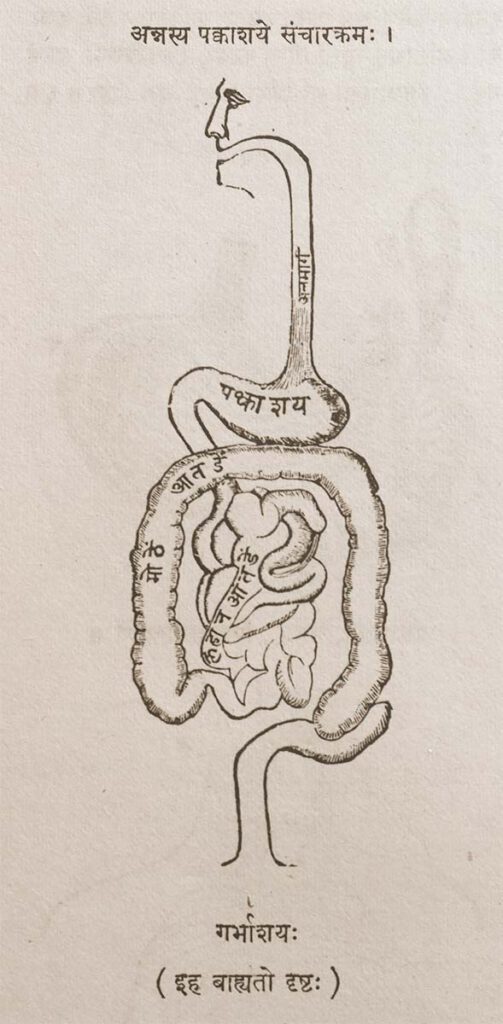
Food’s Course of Movement in the Intestines (engraving) Provenance: Printed Book, page 44. Anglicized Bibliographic data The Śārṅgadhara-saṃhitā by Paṇḍit Śārṅgadharāchārya, son of Paṇḍit Dāmodara with the commentary Aḍhamalla’s Dīpikā and Kāśīrāma’s Gūḍhārtha-Dīpikā. Ed. Paṇḍitaparaśurāmaśāstri. Bombay: Pāndurang Jāwajī, Nirṇaya-Sāgar Press, 1931. Sanskrit Title and Author in Roman font śrīmatpaṇḍitadāmodarasūnu-śārṅgadharācāryaviracitā . śārṅgadharasaṃhitā . bhiṣagvarāḍhamallaviracitadīpikā-paṇḍitakāśirāmavaidyaviracita-gūḍhārthadīpikābhyāṃ ṭīkābhyāṃ saṃvalitā […]
Indian anatomical painting
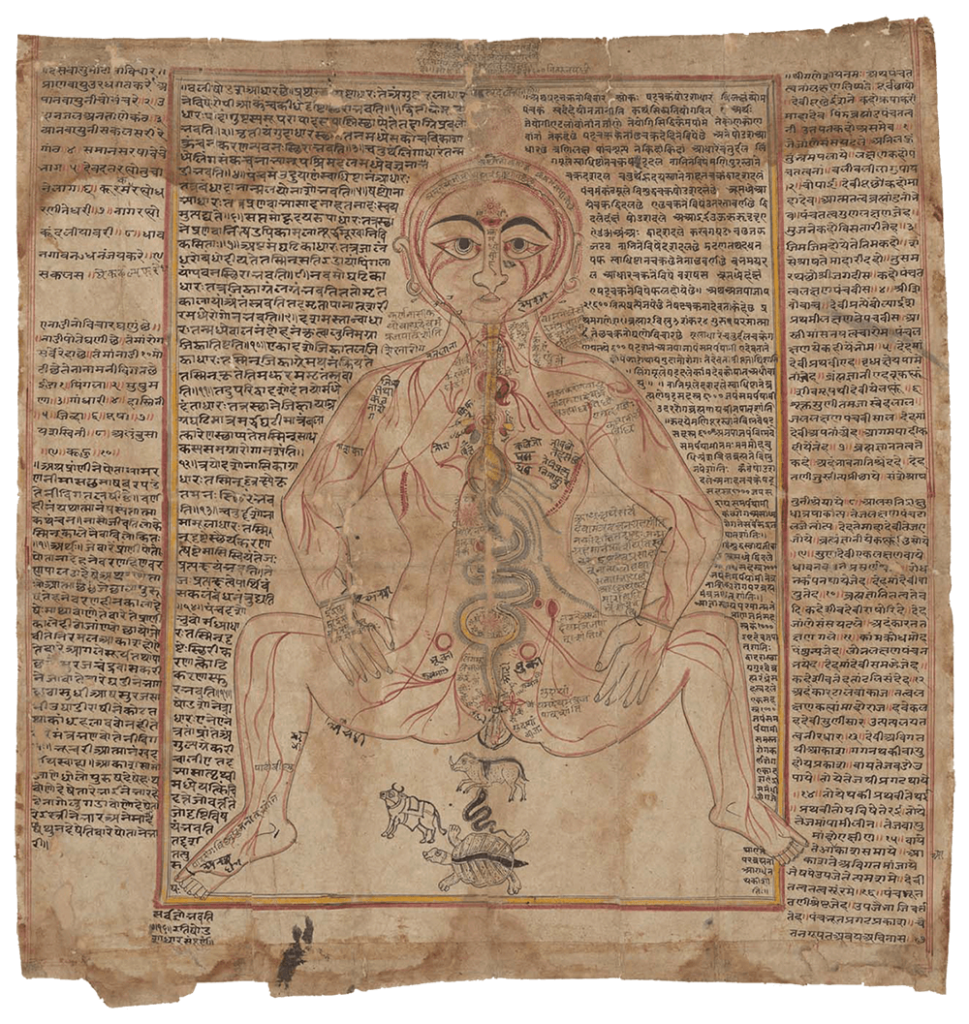
Indian anatomical painting Circa eighteenth century, western India. An old-Gujarati manuscript (circa 1900?). (Wellcome MS Indic d 74. Photo Wellcome Library, London.) Source: Wellcome Collection CC BY-NC-SA 4.0 – Premodern anatomical images in India were influenced by Persian drawings on anatomy, particularly during the Mughal dynasty’s reign in north India from the sixteenth to eighteenth […]
A human anatomical figure
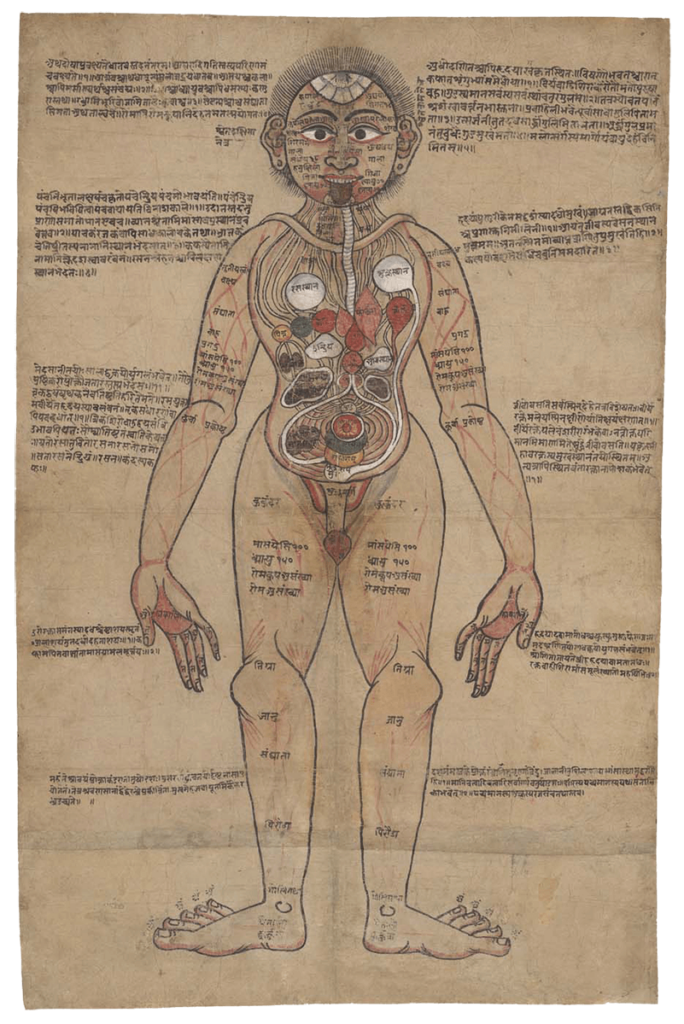
A human anatomical figure Drawing, Nepalese, ca. 1800 (?) Source: Wellcome Library no. 574912iWellcome Collection. Public Domain Mark. – Although India has thousands of manuscripts of premodern medical texts, only a handful contain anatomical illustrations. Text was crucially important for transmitting medical teachings. Figure 1 combines text with an illustration of the body and its […]
The Reward of Cruelty (The Four Stages of Cruelty)
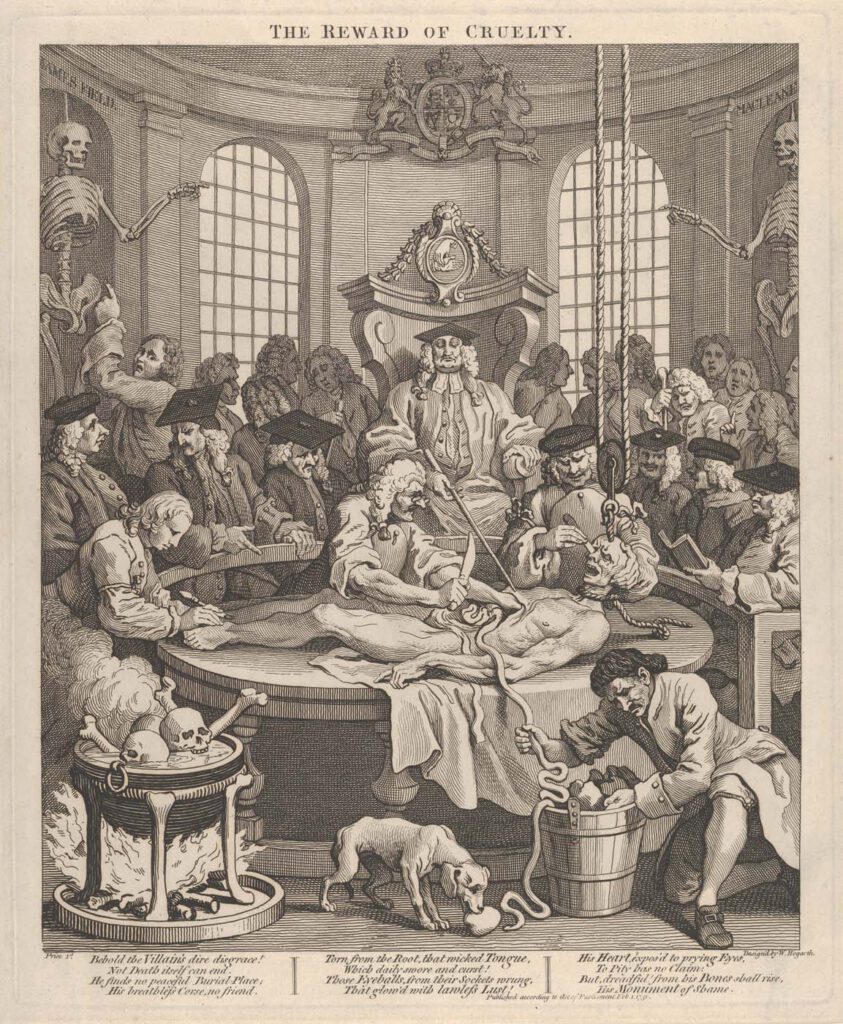
The Reward of Cruelty (The Four Stages of Cruelty), etching and engraving by William Hogarth (English, 1697–1764),February 1, 1751, plate: 15 1/4 x 12 5/8 in. (38.8 x 32 cm)sheet: 15 3/4 x 13 1/16 in. (40 x 33.2 cm) Metropolitan Museum, New York, Gift of Sarah Lazarus, 1891, no. 91.1.139. – This scene, incorporating […]
John Banister Delivering an Anatomical Lecture on the Viscera
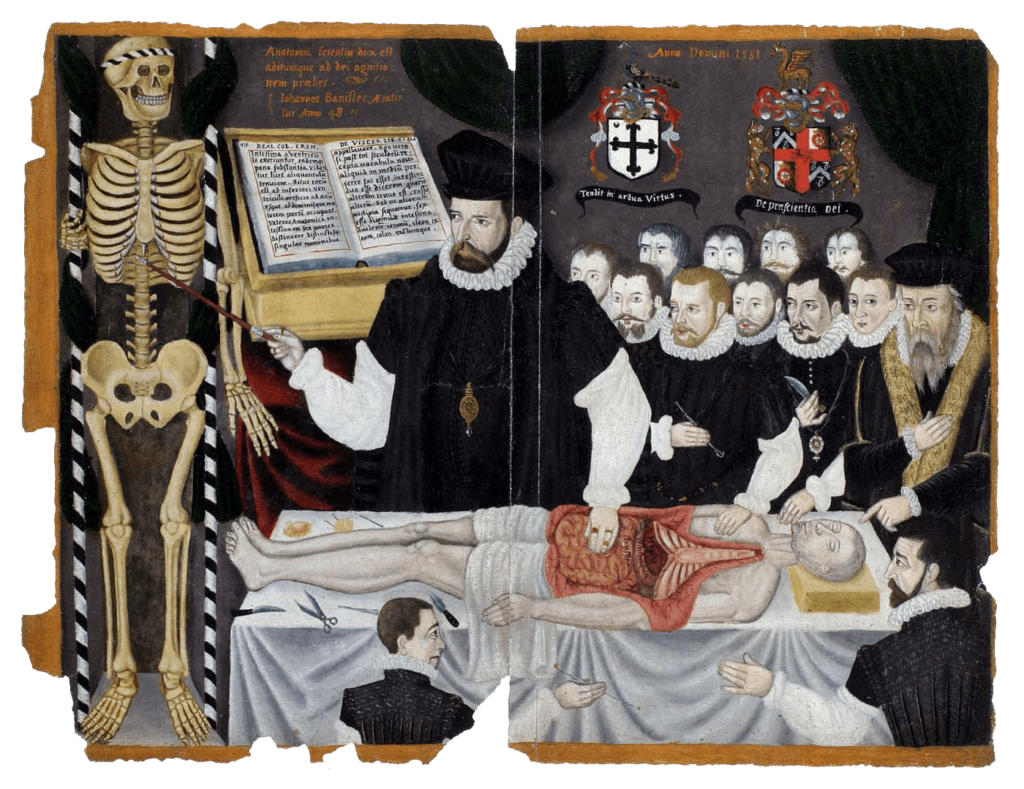
John Banister Delivering an Anatomical Lecture on the Viscera 1581, painting, 33.8 x 43.2 cm. University of Glasgow Library, Glasgow, GB 247 MS Hunter 364 (V.1.1), frontispieceUniversity of Glasgow Archives & Special Collections, MS Hunter 364. – The English surgeon and physician John Banister (1532/3–1599?) lectures on the viscera, placing his hand on the open abdomen […]
Abdominal Dissection
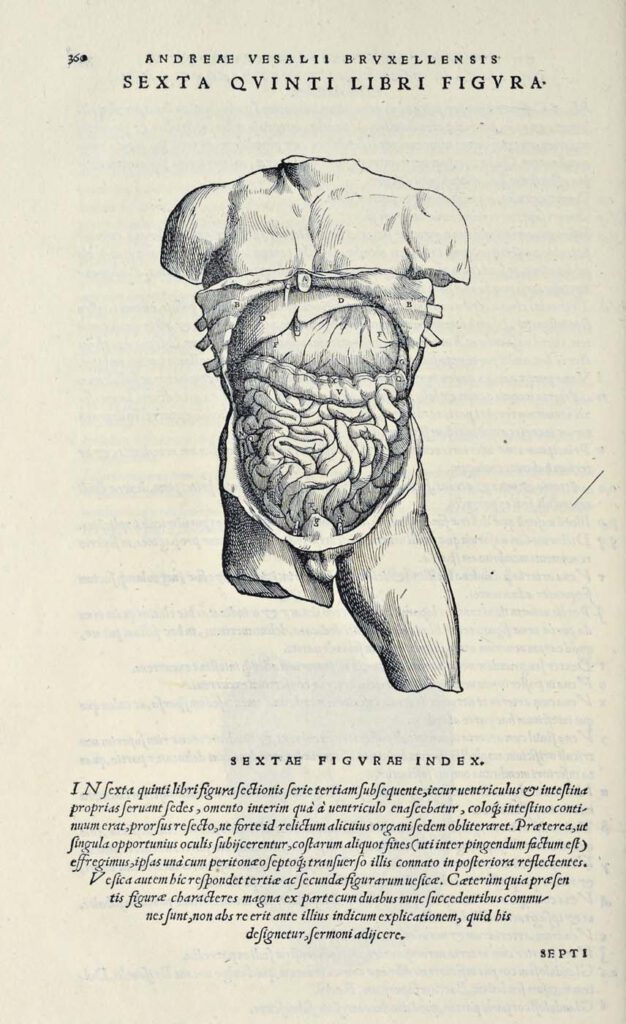
Abdominal Dissection woodcut after Jan Steven van Calcar (North Netherlandish, ca. 1515– ca. 1546). From Andreas Vesalius, De humani corporis fabrica libri septem (Basel: J. Oporinus, 1543), bk. 5, p. 360 [460], fig. 6. Getty Research Institute, Los Angeles, 84-B27611 – Ribs have been broken and the skin peeled back to display the liver, stomach, […]
